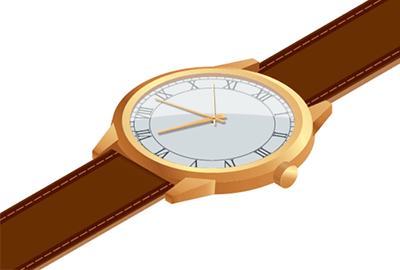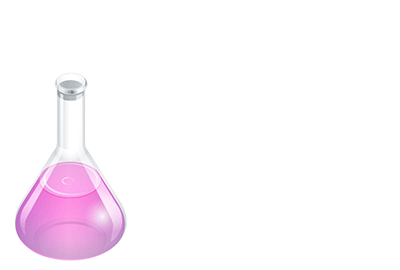FIND OUT MORE
Get in touch with DHL Express today for advice and support from a certified international shipping specialist.
Apply now
A QUARTER OF SALES ON THE WEB
Consumers now expect to interact with their favorite brands online, and it is predicted that 25% of luxury purchases will be made through the web by 2025. By then, Generation Z and Millennials will account for 45% of the global personal luxury goods market.
This potential purchasing power means that businesses like yours need to focus on digital platforms including social media for marketing luxury goods. A strong digital team that knows the products well is vital for building your e-commerce presence and resultant sales.
This potential purchasing power means that businesses like yours need to focus on digital platforms including social media for marketing luxury goods. A strong digital team that knows the products well is vital for building your e-commerce presence and resultant sales.
CHINA'S RISING MIDDLE CLASS
Fueled by the emergence of a new middle class that loves to buy premium products, the Chinese luxury goods market is expected to account for 40% of the sector total by 2024. However, more than half of China's luxury consumers live outside its top 15 cities, making digitized marketing and effective delivery services essential. Don't treat China as a single market – it's a big country with many local trends, so market to local tastes. Chinese consumers (especially younger generations) use social media to make buying decisions.

What's more, watch out for the US-China trade war and its accompanying price hikes for certain high-end brands, dissuading consumers from buying internationally produced merchandise. Find a marketing hook that sets your goods apart.

One emerging luxury sector is men's jewelry. Global sales reached US$5.3bn in 2017, increasing from 2012's US$4.3bn, and growth continues steadily. Men's rings are most popular, taking up a third of sales, while necklaces and chains come in second. The Deakin & Francis creative director, Henry Deakin, also shared that personalized products have dominated for them.
Key players include William Henry, an American men's accessories brand, which boasts celebrity customers such as Nick Jonas, Pierce Brosnan and Harrison Ford. Make sure you're well placed to take advantage of the expanding men's luxury market, and adapt your marketing and product selections accordingly.
Despite China's recent challenges, when coupled with India the two countries still contribute more than half the share of Asia Pacific's jewelry market, which is the largest in the world. But it's also an evolving market, with US jewelers reporting an average growth of 17% in the sales of silver for 2017. In the UK in January 2018, silver was also the only metal to experience an increase in the number of articles hallmarked.
Gold-plated sterling silver was also popular due to its glamorous appearance but lower price-point, with Pandora launching their own collection of affordable 18ct white or yellow gold-plated on sterling silver jewelry.
Gold-plated silver isn't the only popular imitation trend luxury consumers are buying into. While London Fashion Week went completely fur-free in 2018 for the first time, consumers and designers alike are also moving away from silk, cashmere and feathers in favor of vegan-friendly alternatives.

Faux leather is popular due to its vast applications, from bags and shoes to car interiors. Used by Olivia Burton in a range of watches, it now has an estimated market worth of US$85m by 2025. From Banana Republic to Stella McCartney, it's a trend that's showing no signs of slowing down.
TIP: Add faux or synthetic leather to your webshop, or attract customers by offering vegan leather instead.

An increased demand for vegan cosmetics and skin care saw new launches globally increase 175% from 2013 to 2018, with the annual market growth rate predicted at 6.3% to 2025. Products that avoid animal ingredients entirely, including beeswax and honey, are most popular among younger shoppers who are more likely to follow a plant-based diet.
TIP: Check your labeling. Could you make more of your free-from features?

Companies big and small are working with farmers directly to improve ingredient sustainability, making their supply chains transparent to consumers. Lily Farm Fresh Skincare even permits public viewing of their laboratory and surrounding herb fields.
TIP: Look into certifications that show your green credentials.
With the plant-based diet now becoming a recognized mainstream choice, socially conscious purchasing is very much on trend. While the time and expense needed to manufacture such products can be greater than traditional methods, a brand's status – and sales – can receive a boost for making the switch.

Faux leather is popular due to its vast applications, from bags and shoes to car interiors. Used by Olivia Burton in a range of watches, it now has an estimated market worth of US$85m by 2025. From Banana Republic to Stella McCartney, it's a trend that's showing no signs of slowing down.
TIP: Add faux or synthetic leather to your webshop, or attract customers by offering vegan leather instead.

An increased demand for vegan cosmetics and skin care saw new launches globally increase 175% from 2013 to 2018, with the annual market growth rate predicted at 6.3% to 2025. Products that avoid animal ingredients entirely, including beeswax and honey, are most popular among younger shoppers who are more likely to follow a plant-based diet.
TIP: Check your labeling. Could you make more of your free-from features?

Companies big and small are working with farmers directly to improve ingredient sustainability, making their supply chains transparent to consumers. Lily Farm Fresh Skincare even permits public viewing of their laboratory and surrounding herb fields.
TIP: Look into certifications that show your green credentials.
With the plant-based diet now becoming a recognized mainstream choice, socially conscious purchasing is very much on trend. While the time and expense needed to manufacture such products can be greater than traditional methods, a brand's status – and sales – can receive a boost for making the switch.

GETTING YOUR GOODS TO CUSTOMERS
Whether you're shipping glittering jewels or customized clutch bags, having a reliable shipping partner never goes out of style. Make sure your chosen service can deliver goods to all the countries you want to target, as well as offering expedited options when needed, helping you serve fashion and luxury goods consumers across the world.
GETTING YOUR GOODS TO CUSTOMERS
Whether you're shipping glittering jewels or customized clutch bags, having a reliable shipping partner never goes out of style. Make sure your chosen service can deliver goods to all the countries you want to target, as well as offering expedited options when needed, helping you serve fashion and luxury goods consumers across the world.